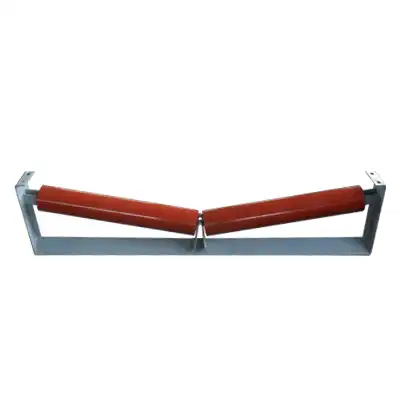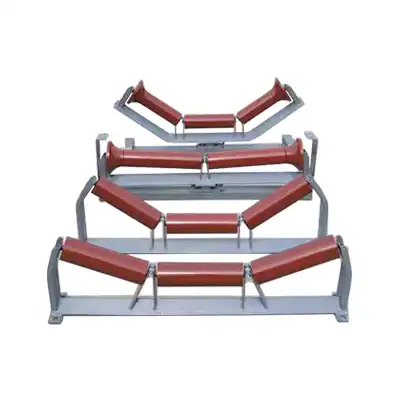- English
- French
- German
- Portuguese
- Spanish
- Russian
- Japanese
- Korean
- Arabic
- Greek
- German
- Turkish
- Italian
- Danish
- Romanian
- Indonesian
- Czech
- Afrikaans
- Swedish
- Polish
- Basque
- Catalan
- Esperanto
- Hindi
- Lao
- Albanian
- Amharic
- Armenian
- Azerbaijani
- Belarusian
- Bengali
- Bosnian
- Bulgarian
- Cebuano
- Chichewa
- Corsican
- Croatian
- Dutch
- Estonian
- Filipino
- Finnish
- Frisian
- Galician
- Georgian
- Gujarati
- Haitian
- Hausa
- Hawaiian
- Hebrew
- Hmong
- Hungarian
- Icelandic
- Igbo
- Javanese
- Kannada
- Kazakh
- Khmer
- Kurdish
- Kyrgyz
- Latin
- Latvian
- Lithuanian
- Luxembou..
- Macedonian
- Malagasy
- Malay
- Malayalam
- Maltese
- Maori
- Marathi
- Mongolian
- Burmese
- Nepali
- Norwegian
- Pashto
- Persian
- Punjabi
- Serbian
- Sesotho
- Sinhala
- Slovak
- Slovenian
- Somali
- Samoan
- Scots Gaelic
- Shona
- Sindhi
- Sundanese
- Swahili
- Tajik
- Tamil
- Telugu
- Thai
- Ukrainian
- Urdu
- Uzbek
- Vietnamese
- Welsh
- Xhosa
- Yiddish
- Yoruba
- Zulu
What Are the Advantages of a Rubber Lagging Conveyor Pulley?
2024-07-10 08:56:19
Rubber lagging conveyor pulleys are a common feature in many industrial conveyor systems, known for their durability and grip. If you're wondering about the benefits of these pulleys, you're not alone. Here are some commonly asked questions about rubber lagging conveyor pulleys:
How Does Rubber Lagging Improve Conveyor Performance?
Increased Traction and Reduced Slippage
Rubber lagging significantly enhances traction between the pulley and the conveyor belt. By providing a high-friction surface, it minimizes the chances of belt slippage, especially in high-load or incline conveyor applications. This increased traction ensures smoother operation and prevents costly interruptions caused by belt misalignment or slipping, thereby improving overall conveyor efficiency and reliability.
Noise Reduction and Vibration Dampening
The rubber coating of lagging acts as a buffer against vibrations generated during conveyor operation. This dampening effect reduces noise levels in the workplace, creating a quieter and more comfortable environment for workers. By absorbing and dispersing vibrations, rubber lagging also helps in prolonging the lifespan of conveyor components by mitigating the stress and fatigue that can arise from excessive mechanical vibrations.
Enhanced Pulley and Belt Protection
Rubber lagging serves as a robust protective layer for both the pulley and the conveyor belt. It shields the pulley surface from abrasive wear and corrosion, extending the operational lifespan of the pulley itself. This protection is particularly crucial in harsh environments where abrasive materials or corrosive substances are being conveyed. By reducing wear and tear on the belt, rubber lagging also contributes to minimizing maintenance requirements and associated downtime, optimizing overall conveyor system performance and longevity.
Improved Belt Tracking and Stability
The smooth and uniform surface provided by rubber lagging promotes consistent belt tracking. It helps to maintain proper alignment of the conveyor belt on the pulley, reducing the risk of belt mistracking that can lead to spillage or premature wear. This stability not only enhances operational efficiency but also enhances safety by minimizing the potential for accidents or damage caused by belt deviation.
What Are the Economic Benefits of Using Rubber Lagging Conveyor Pulleys?
Lower Maintenance Costs and Extended Component Lifespan
Rubber lagging on rubberized conveyor pulley helps reduce maintenance expenses significantly. By enhancing traction and reducing slippage between the pulley and the belt, rubber lagging minimizes wear and tear on both components. This reduction in wear translates to longer intervals between maintenance cycles and fewer replacements of pulleys and belts. Consequently, maintenance downtime is reduced, allowing for increased operational uptime and productivity. These cost savings in maintenance labor and replacement parts contribute directly to lower overall operating expenses for the conveyor system.
Improved Energy Efficiency and Reduced Operational Costs
The enhanced grip provided by rubber lagging reduces the energy required to drive the conveyor belt. With reduced slippage, the motor can operate more efficiently, consuming less power to achieve the same throughput. This improvement in energy efficiency translates directly into lower operational costs over the long term. Additionally, by optimizing power consumption, rubber lagging contributes to a more sustainable operation, aligning with environmental goals and reducing the carbon footprint of the conveyor system.
Minimized Production Downtime and Increased Throughput
Rubber lagging helps maintain stable belt tracking and prevents operational disruptions such as belt misalignment or slip-related stoppages. The reliable performance facilitated by rubber lagging ensures continuous material handling operations, minimizing unplanned downtime and associated production losses. This increased operational reliability enables the conveyor system to achieve higher throughput and meet production targets consistently, thereby enhancing overall profitability and competitiveness in industrial operations.
Enhanced Safety and Reduced Liability Costs
Beyond direct operational savings, rubber lagging contributes to a safer working environment by reducing the risk of accidents associated with belt slippage or mistracking. Fewer workplace incidents lead to lower liability costs related to worker injuries and potential legal expenses. Moreover, maintaining a safe workplace enhances employee morale and productivity, contributing to long-term operational efficiency and economic benefits.
How Does Rubber Lagging Impact Workplace Safety?
Rubber-Coated Pulley plays a crucial role in enhancing workplace safety through several key mechanisms. Firstly, by providing enhanced grip and reducing the likelihood of belt slippage, rubber lagging helps prevent accidents and injuries caused by sudden stops or unexpected movements of the conveyor belt. This increased traction ensures that the belt remains securely in place, minimizing the risk of personnel coming into contact with moving parts or falling materials.
Secondly, rubber lagging contributes to enhanced belt tracking by maintaining proper alignment of the conveyor belt on the pulleys. This reduces the risk of belt mistracking, which can lead to material spillage, jams, or even conveyor belt damage. By promoting consistent belt movement and alignment, rubber lagging helps prevent potential hazards such as conveyor belt entrapment or sudden dislodgment of materials, thereby creating a safer working environment.
Furthermore, the dampening effect of rubber lagging on vibrations and noise levels also contributes to workplace safety. By reducing noise pollution and mechanical vibrations, rubber lagging enhances operator comfort and concentration, minimizing distractions and fatigue that can contribute to accidents.
In summary, rubber lagging enhances workplace safety by reducing the risk of accidents through improved grip, enhanced belt tracking, and mitigation of operational hazards associated with conveyor systems. Its application not only safeguards personnel and equipment but also contributes to a more efficient and productive working environment in industrial settings.
conclusion
In conclusion, the advantages of rubber lagging conveyor pulleys are numerous, ranging from improved performance and economic benefits to enhanced workplace safety. By reducing slippage, noise, and maintenance costs, rubber lagging contributes to the efficiency and longevity of conveyor systems.
References
1.Bartscher, P., & Sobek, S. (2019). Rubber Lagging for Conveyor Pulleys: Benefits and Applications. Bulk Solids Handling, 39(4), 68-75.
2.CEMA (Conveyor Equipment Manufacturers Association). (2020). Belt Conveyors for Bulk Materials (7th ed.). Conveyor Equipment Manufacturers Association.
3.Williams, P. T., & Tuck, K. L. (2017). Analysis of Force Ratios in Conveyor Belt of Classic Belt Conveyor. MATEC Web of Conferences, 134, 01001.
4.PPI (Precision Pulley & Idler). (2020). Rubber Lagging Overview.
5.Van Gorp Corporation. (2018). Conveyor Pulley Lagging: Selection and Application Guide.
6.Flexco. (2019). Enhancing Conveyor Productivity with Pulley Lagging.
7.Harrison, A., & Roberts, A. W. (2017). Conveyor Belt Tracking Guide. Bulk Solids Handling, 37(2), 82-87.
8.Maslen, H., & Brown, S. (2018). Design and Selection of Drum Pulleys for Bulk Handling Conveyors. Bulk Solids Handling, 38(3), 98-104.
9.Hager, M., & Hintz, A. (2016). Transient Belt Stresses During Starting and Stopping a Conveyor. Bulk Solids Handling, 36(1), 26-32.
10.Engineering & Mining Journal. (2019). Innovations in Conveyor Belt Technology. Engineering & Mining Journal, 220(8), 56-59.





